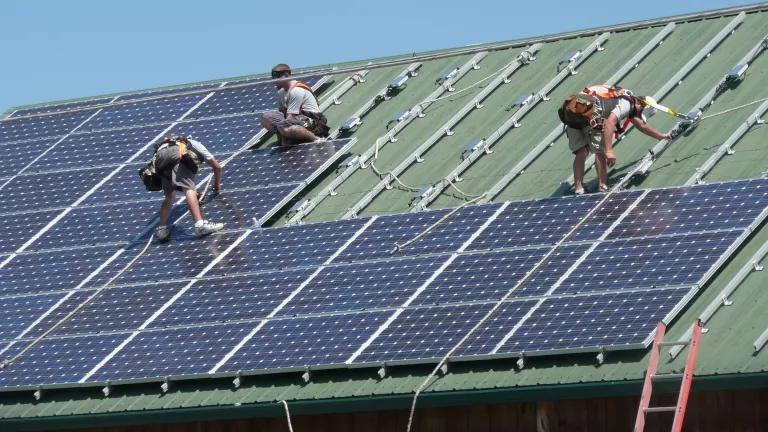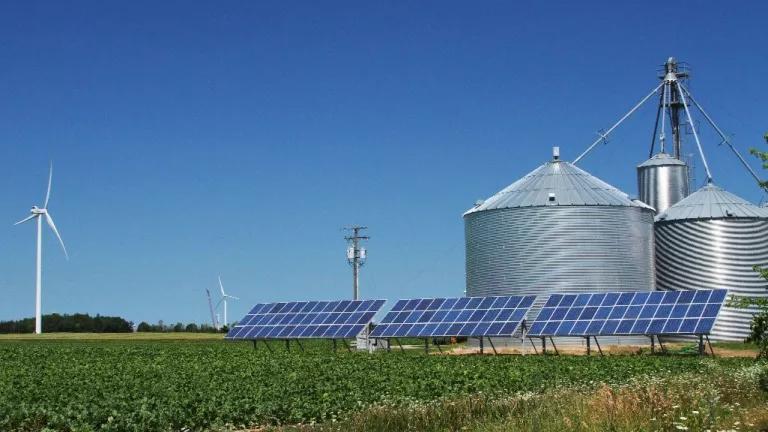With the House and the Senate moving slowly towards conference on a comprehensive energy bill, this week NRDC and a group of other environmental organizations sent a letter around both chambers calling for environmental protections and performance standards as part of any expanded biofuels mandate.
As things stand now, the Senate has adopted a 36 billion gallon mandate for 2022 of which 15 billion can be "conventional biofuels," which must provide at least a 20 percent reduction in greenhouse gas emissions, and the rest must be "advanced biofuels," which can be just about anything other than corn ethanol and is mostly thought to come from cellulosic feedstocks. The House didn't adopt an expanded renewable fuel standard, so we're arguing that if anything is to come out of conference it needs to be much more protective to avoid unintended consequences and much more demanding so that biofuels start delivering on their environmental promise.
The current renewable fuel standard requires 250 million gallons of cellulosic biofuels by 2013 and due to a loophole that allows corn ethanol refined using renewable energy to count as cellulosic even this mandate may not drive much in the market. (Note that processing corn with renewable energy is a really good thing to do, but it doesn't drive the cellulosic technologies forward.) So this begs the question that I get asked all the time, will cellulosic biofuels be ready or will they always be 5 years away.
Tom Philpott, writing for the Gristmill here, and Robert Rapier, on his R-Squared Energy Blog here, both look at a recent USDA study and draw the conclusion that whenever it happens, cellulosic biofuels are a long way away. I would argue that: a) they're putting too much stock in USDA's opinion; b) while it's impossible to know when cellulosic biofuels will be economic, events over the last 2 years provide good reason for optimism; and c) even if someone has a technology that can be economically competitive with corn ethanol and gasoline in their lab today, it could easily take 5 years before there would be rapid deployments of the technology and 10 years before cellulosic biofuels is being produced on a scale that compares to corn ethanol let alone gasoline. Let's look at each of these in turn.
Philpott points to USDA's cellulosic R&D funding and in particular their support of the joint DOE/USDA Biomass Research and Development Initiative as evidence that "the USDA's analysts should know something about the prospects for mass production of cellulosic ethanol." Actually the funding for the BRDI only started in earnest in 2002 and DOE has basically always covered USDA's half of the dollar's given out. USDA's funding of cellulosic biofuels has always been thin and poorly managed. That may be finally changing, but I wouldn't give their analysts any particular deference on the status of cellulosic technology.
This is doubly true given how the development of the technology has changed so dramatically in the last 2 years. When I first started looking at biofuels in 2002, all of the cutting edge expertise was in academia and the national energy labs. You could talk these experts and they would tell you where the technology stood. Over the last 2 years, all of the cutting edge research has moved into the private sector and is proprietary. So while it's now much harder to know where things stand, we know that a lot of investor dollars are being bet on near-term commercialization (if anyone has a good round up of how much, I'd love to see it) and the research is being driven by much stricter taskmasters, namely venture capitalists and private investors.
Combine this with the very impressive number of projects the were proposed in response to New York's funding solicitation for two pilot projects and DOE's solicitation for six small commercial scale project, and it's hard not to believe that things are moving along quickly. Both of these solicitations required significant private sector flesh in the game and a lot of big names responded.
But it's my understanding that none of these projects will come on line until 2010. Assuming a few of them perform very well, they could be expanded, but it's really the second generation plant that investors will consider a potential cook-cutter model. Being optimistic, let's assume that we go into 2013 with three different technologies that can compete with corn ethanol or gasoline each with an operating, second generation plant of about 50 million gallon per year capacity. Even if the technologies are so promising that orders for more are actually placed in 2012, how fast will capital and engineering capacity flow into the sector and how long will siting and permitting lead times be? One billion gallons of capacity by 2016 seems reasonable to me assuming we have at least one clear success on line by 2010. Three billion would be absolutely fantastic. That would assume that as of 2013, the cellulosic industry grows as fast as the corn ethanol industry grew from middle of 2006 to middle of 2007.
But for this sort of takeoff to be possible (from the current private sector race to the engineering and capital, to the distribution and demand infrastructure), there's got to be a strong market demand. That's going to take policy mandates (see this fact sheet for our preferred policy package.) and corn is going to play an important role under any plausible transition. That's part of why we need the environmental safeguards and performance standards. (Also there's no guarantee that cellulosic technologies will be developed in a way that's good for the environment without them.) But it's a risk. Philpott and Rapier make their doubts that cellulosic technology will prove out soon very clear. I'm an avowed optimist. But as Rapier notes, we need cellulosic biofuels or some low-carbon transportation energy option and I would add that we need it soon and that we need more than one of them.



